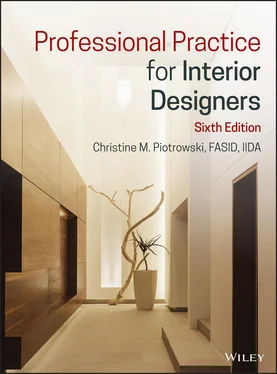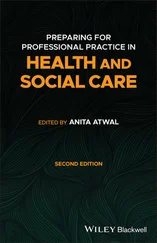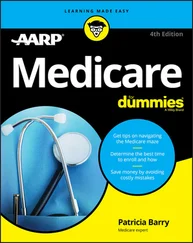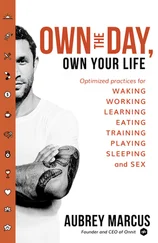Christine M. Piotrowski - Professional Practice for Interior Designers
Здесь есть возможность читать онлайн «Christine M. Piotrowski - Professional Practice for Interior Designers» — ознакомительный отрывок электронной книги совершенно бесплатно, а после прочтения отрывка купить полную версию. В некоторых случаях можно слушать аудио, скачать через торрент в формате fb2 и присутствует краткое содержание. Жанр: unrecognised, на английском языке. Описание произведения, (предисловие) а так же отзывы посетителей доступны на портале библиотеки ЛибКат.
- Название:Professional Practice for Interior Designers
- Автор:
- Жанр:
- Год:неизвестен
- ISBN:нет данных
- Рейтинг книги:4 / 5. Голосов: 1
-
Избранное:Добавить в избранное
- Отзывы:
-
Ваша оценка:
- 80
- 1
- 2
- 3
- 4
- 5
Professional Practice for Interior Designers: краткое содержание, описание и аннотация
Предлагаем к чтению аннотацию, описание, краткое содержание или предисловие (зависит от того, что написал сам автор книги «Professional Practice for Interior Designers»). Если вы не нашли необходимую информацию о книге — напишите в комментариях, мы постараемся отыскать её.
Professional Practice for Interior Designers
Professional Practice for Interior Designers — читать онлайн ознакомительный отрывок
Ниже представлен текст книги, разбитый по страницам. Система сохранения места последней прочитанной страницы, позволяет с удобством читать онлайн бесплатно книгу «Professional Practice for Interior Designers», без необходимости каждый раз заново искать на чём Вы остановились. Поставьте закладку, и сможете в любой момент перейти на страницу, на которой закончили чтение.
Интервал:
Закладка:
Another point about key words is to think in terms of nouns for your descriptions rather than just verbs. Action verbs are common in resumes but sometimes an employer is not looking for “action” but a noun. For example, he may search for “registered interior designer in Florida” not “experienced designer.” Consider how you are using all your words in a resume to present the best picture of what you CAN do for a firm, not just what you did for someone else or in school.

FIGURE 6‐1. Example of a poorly written student resume. Note the misspelled words.
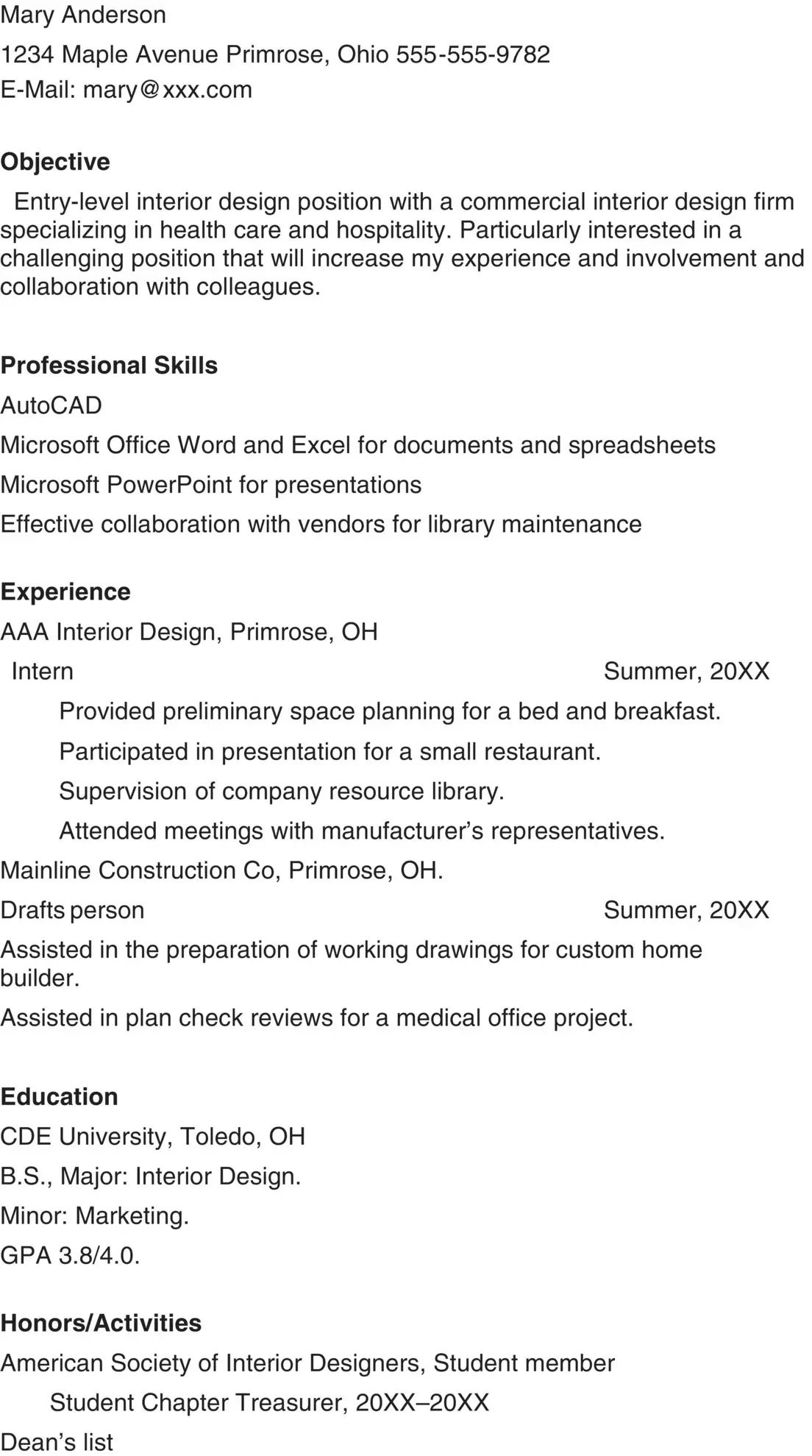
FIGURE 6‐2. This is a revised version of the student resume in Figure 6‐1.
Physical Appearance of a Resume
The physical appearance of job application documents is important whether they are mailed as a paper version or sent electronically. The appearance of the resume can, by itself, make a good or bad impression. Here's a comment from a design firm manager: “The resume and letter came in handwritten, on lined notebook paper. It wasn't even on letter‐size paper! It sure got my attention—that is, I promptly put it in the do not call file!” claimed a design director.

FIGURE 6‐3. Resume prepared by an experienced professional.
An employer might be impressed by a creatively designed paper resume or even a creatively designed electronic version, but not if the content is lacking. For most employers, creativity in the presentation of resumes and cover letters is mostly an inconvenience. Remember that even a print resume might be scanned, and if it cannot be scanned, it will not be read.
Here are some important tips in preparing a traditional print version of a resume. These tips apply to a traditional print cover letter as well:
Make sure to have perfect spelling and good grammar.
Stick to standard business size paper as they might be filed in a letter size filing cabinet.
The text should reproduce as a dark black image. This does not mean to make everything bold face.
Do not send photocopies if you mail your resume.
If you include a photograph, avoid casual or suggestive ones.
Online resumes are likely to be sent in plain text using Microsoft Word or another word processing software. If you e‐mail your resume as an attachment, there is a chance that the receiver's system will consider it spam and not accept the e‐mail. An introductory e‐mail will help the receiver know that you are sending something and they can look out for it. As for online presentation, here are some important tips:
You can use a similar format as you would the paper version.
Be sure to use headlines to divide up the body of the resume.
Keep sections short. If the resume is too long, it will be harder to download or take too much time.
Bullets and indents are also a good way to format the resume.
It is okay to use bold type especially for headlines, but stick to basic New Times Roman for your typeface. Don't use the creative typefaces, which will make it harder to read and scan.
It is okay to use color, but again consider how it will successfully transmit. Use simple graphics that will not take too long to download.
When you post your resume to a site—whether it is your own site or one of the job Web sites like Monster.com—you want to be cyber safe. Be sure you understand the privacy policies of the posting site.
You can include links to your Web site or your LinkedIn profile.
Check your spelling and grammar—again!
You may want to check the reference list for books that can help further if you wish to prepare an electronic resume. Several are included in the general references.
THE COVER LETTER
Cover letters are a traditional part of the job‐hunt process. It should always accompany a resume whether the traditional paper variety or the online variety. Basically use the same tactics for either expression including using key words in your cover piece. Figure 6‐4is an example of a cover letter appropriate in today's job market. This cover can then inform the recipient that a resume is attached. Ideally, if these items are to be sent electronically, it is best to convert the resume and cover letter to PDF format so that the recipient cannot make changes.
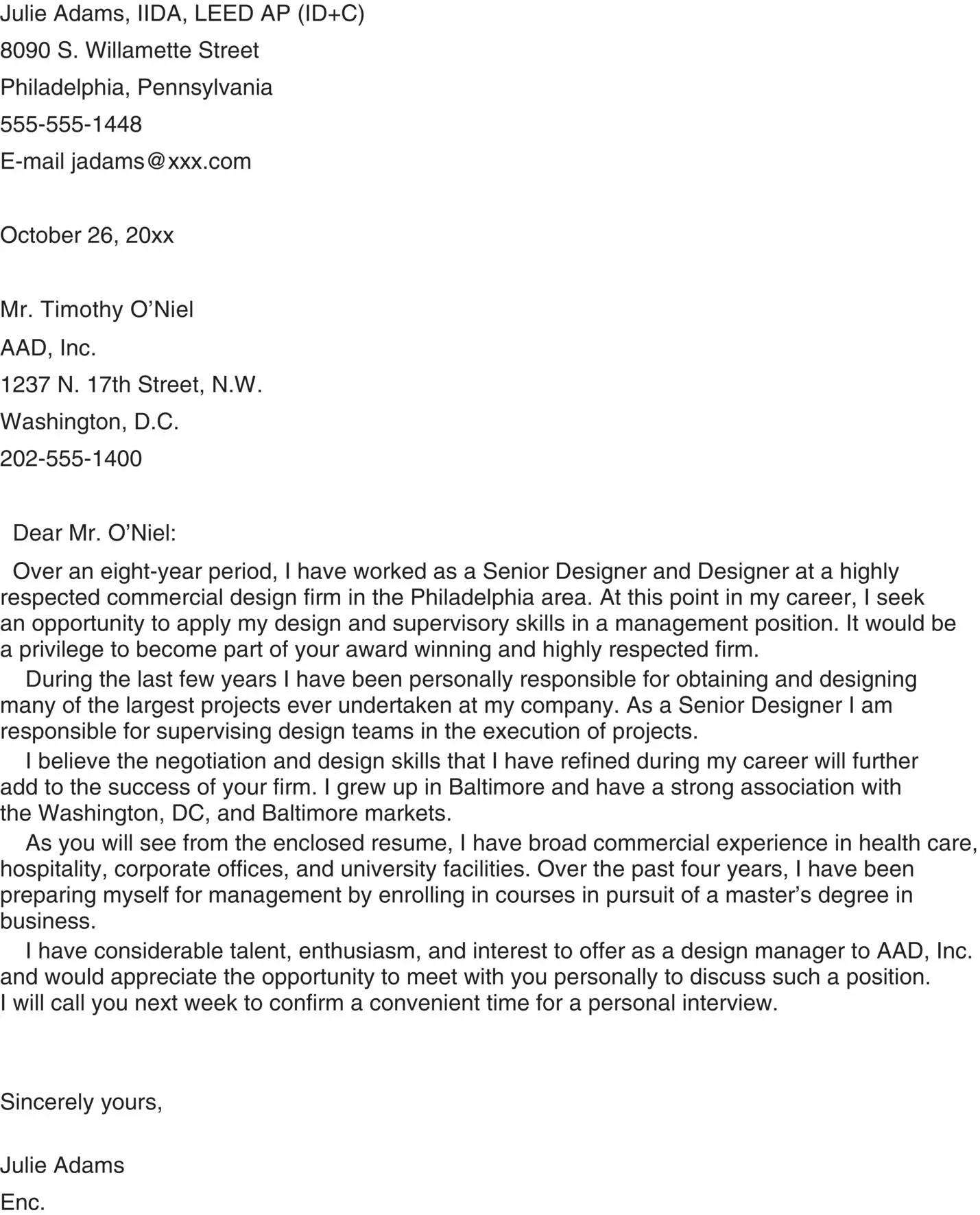
FIGURE 6‐4. A cover letter in which an individual is inquiring about a possible position at a firm. Note that this individual is seeking a job change from designer to design manager.
Your purpose is to get the receiver to read your resume and invite you to the office. The cover letter is an opportunity for you to introduce yourself. Hopefully, the employer will be so impressed by the cover letter that you will be invited for an interview.
It is important to do as much research on each firm as you can to try to make sure you will be a good match. You might also find interesting information about design firms from advertising and project layouts in magazines. You will want to determine who should receive the letter so that it can be personalized. If you are responding to a lead such as having met someone at a professional meeting or your advisor, be sure you have the information at hand to include.
It is vital that this letter be prepared using good business‐writing techniques, professional language, and perfect spelling. Keep the cover letter to one page for a printed version and about two short paragraphs for an online version. You want the employer to read your resume and not spend a lot of time with the cover itself.
Now let's look at the parts of a cover letter.
Begin by personalizing the letter. Try to find out a specific name of the person who would likely be doing the interviewing. You can research this via the company Web site. The “About Us” and “Contact Us” sections of Web sites will help you discover the name of the owner. A letter addressed to a specific person creates a better impression that one addressed to “Personnel Director” or “To whom it may concern.”
The first paragraph should attract attention by concisely stating the purpose of your letter. Write with enthusiasm and interest. Let the prospective employer know that you know something about the company and why you want to work there. It should include a statement about how you heard of the job you are applying for. Personalizing each letter makes it sound as if it were written only for that company.
The second and third paragraphs should contain specific information about the applicant's skills and interests in the position. Explain how your skills relate to the job that was advertised or otherwise meet the employer's needs.
The last paragraph should tell the prospective employer that you want an interview. Some experts refer to this as a call to action. You want the employer to call you, but do not wait for the employer to respond. The last paragraph should include a reference to the enclosed resume as well as the availability of your portfolio for review. It should tell the prospective employer that you want an interview.Mention a few of your skills or accomplishments, as well as how these relate to the employer's needs. But don't summarize your resume. Accomplishments, such as sales records and management experience, are important items for experienced designers to include. Students should point out the skills in which they are particularly proficient related to coursework or internship experiences.
Читать дальшеИнтервал:
Закладка:
Похожие книги на «Professional Practice for Interior Designers»
Представляем Вашему вниманию похожие книги на «Professional Practice for Interior Designers» списком для выбора. Мы отобрали схожую по названию и смыслу литературу в надежде предоставить читателям больше вариантов отыскать новые, интересные, ещё непрочитанные произведения.
Обсуждение, отзывы о книге «Professional Practice for Interior Designers» и просто собственные мнения читателей. Оставьте ваши комментарии, напишите, что Вы думаете о произведении, его смысле или главных героях. Укажите что конкретно понравилось, а что нет, и почему Вы так считаете.
